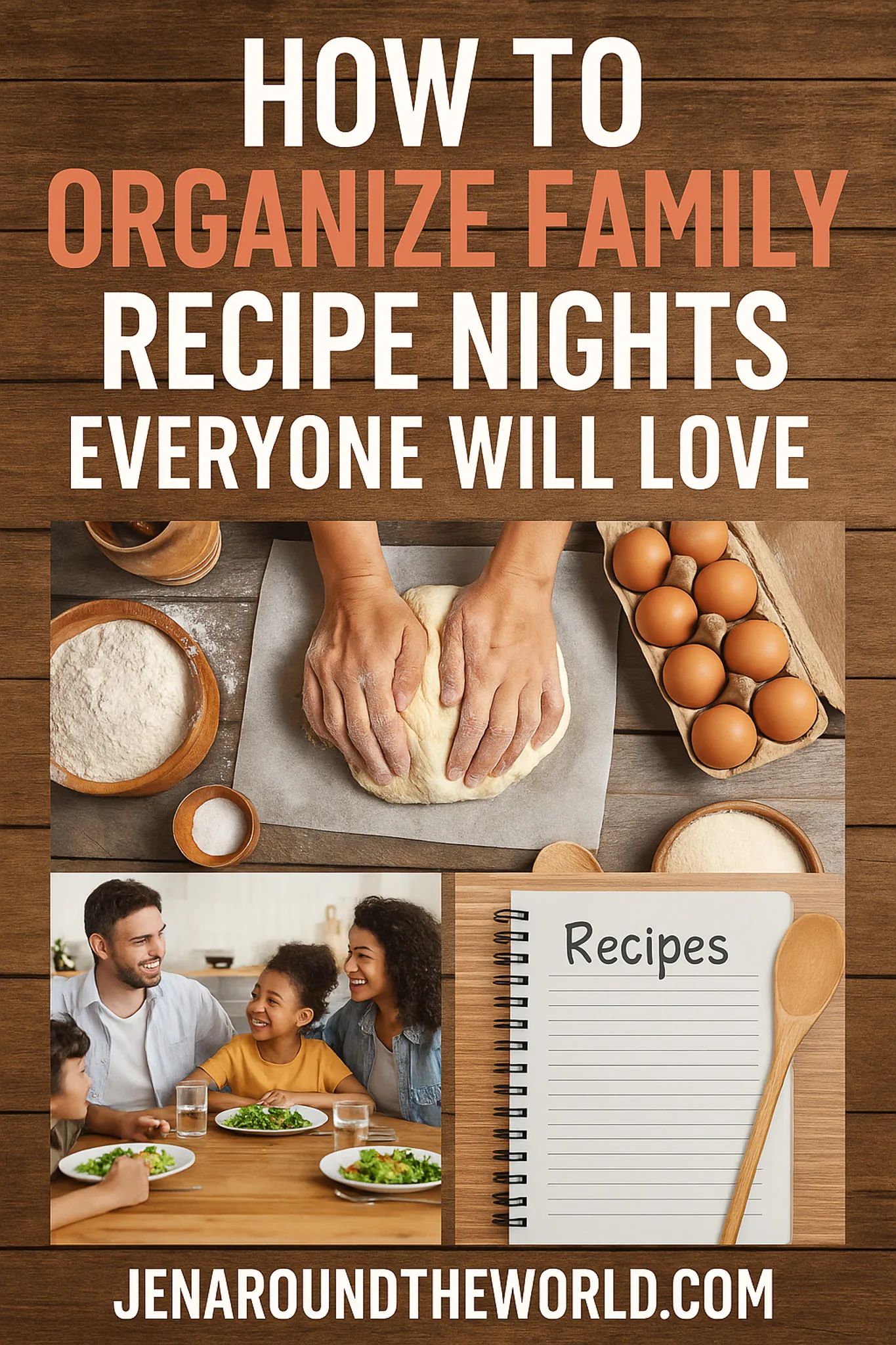Family recipe nights bring together the best ingredients of life – food, family, and a dash of controlled chaos.
Whether you’re trying to bond over spaghetti or simply attempting to keep Uncle Bob from talking politics again (spoiler alert: it’s unavoidable), planning these evenings requires a little thought and just the right touch of creativity.

So, what makes these gatherings stand out? Themes that don’t scream “Pinterest fails,” menus even your picky cousin can’t critique, and simple tools that make everything look effortlessly fun.
Picking a Theme That Brings Out Everyone's Inner Chef
Themes add structure and excitement to your recipe nights, but they don’t need to feel like you’re planning the Met Gala.

- Choose a cuisine everyone loves: Taco Tuesdays or Italian pasta night are crowd favorites.
- Celebrate a family tradition: Grandma’s secret dumpling recipe? Yes, please.
- Go seasonal or festive: Pumpkin everything in October; fresh salads in summer.
Keep it fun and flexible. Themes should inspire – not stress out – the cooks (or eaters) involved! Think of it as choosing an outfit for your meal.
Crafting Menus to Please Picky Eaters and Adventurous Foodies Alike
Menus can make or break the vibe of family recipe night. Keep them simple, but clever. Include options that balance familiar dishes with something new for adventurous tasters.

- Mix classics with a twist: Mac and cheese for kids, truffle mac and cheese for adults.
- Involve toddlers through visuals: Create menus with pictures of each dish. They can point to their choice like they're at a fancy toddler café.
Using printable menu options makes this even easier. Online tools let you design colorful templates everyone enjoys while keeping the process streamlined!
Adding Creative Touches Without Going Overboard on Prep Time
The secret to effortless charm? Simplicity with a sprinkle of creativity. No need for elaborate DIY projects that require six hours and a glue gun.
- Create a toppings bar: Perfect for tacos, pizzas, or baked potatoes. Everyone customizes their plate like they’re at a fancy food truck.
- Use themed table settings: Think butcher paper as placemats where kids can draw their “meal reviews” after eating.
- Plan quick conversation cards: Write quirky food trivia or silly questions to keep everyone engaged while waiting for the oven timer.
Small details make it feel special without turning your kitchen into an event space.
Ways to Get Everyone Involved in the Cooking Process
Making dinner is more fun when it’s collaborative – so turn it into family theater with everyone playing a part.
- Assign sous-chef roles based on skills: Knife-safe teens chop veggies, younger ones tear herbs or rinse produce.
- Host taste-test stations mid-prep: Mix sauces or spices and let everyone weigh in before finalizing flavors (yes, even the five-year-old).
- Offer recipe-based “jobs”: Someone kneads dough, another stirs soup – it’s like being part of an edible assembly line!
When tasks are bite-sized and playful, participation skyrockets – even from those usually glued to screens!
Keeping Kids Engaged Without Turning Your Kitchen Into a Disaster Zone
Cooking with kids is a lot like doing improv comedy – you never know where it’s going, but you hope it doesn’t end in tears. Keep them entertained without inviting chaos.
- Set up a “mini chef station”: Use child-safe utensils and pre-measured ingredients they can handle without “accidentally” dumping an entire bag of flour.
- Make simple challenges: Who can roll the most meatballs or design the best smiley face pancake? Tiny competitions keep little hands busy.
- Give them kitchen power: Let kids announce steps out loud or ring a bell when something is done – instant sous-chef energy boost.
Your goal? Controlled fun, not Lord of the Flies with spatulas.
Setting Up Your Kitchen for Success, Even If It’s Tiny
A small kitchen isn’t an excuse to feel cramped – it’s just cozier real estate for your culinary genius!
Try smart setups that maximize every inch.
- Think portable tools: A rolling cart adds instant prep space and storage without permanently crowding your counter.
- Pre-prep strategically: Dice vegetables, marinate meats, or pre-mix dry ingredients ahead of time to cut down on last-minute clutter.
- Label stations for big nights: Mark spaces for cutting, mixing, or plating so people know where to hover instead of swarming like confused bees.
Even the tiniest kitchens can become command centers if everyone respects boundaries (and no one steals snacks prematurely).
How To Wrap Up Recipe Night With Style (and Less Cleanup)
Ending family recipe night should feel as satisfying as the last bite of dessert, not like you’ve just survived a food tornado. The trick? Clever shortcuts and cheerful teamwork.
- Turn cleanup into a game: Who can stack plates fastest without breaking anything? Bonus points for “artistic” silverware arrangements.
- Use one-pot wonders for main dishes: Fewer pans equal less mess – and less arguing over who scrubs the casserole dish.
- Prep “to-go” containers in advance: Pack leftovers during clean-up, so everyone leaves with tomorrow’s lunch sorted (or at least dessert).
When cleanup feels effortless, you end the night on a high note instead of collapsing on your kitchen floor!
Memories Served Family-Style
Family recipe nights aren’t just about the food – they’re about laughter, stories, and a shared sense of accomplishment. With thoughtful themes, creative touches, and clever ways to get everyone involved, these evenings turn into something special without adding stress.
Whether it’s toddlers picking menu pictures or teens competing in taste tests, every moment becomes part of the fun. So grab your aprons (and humor), because the best memories are made one delicious bite at a time!